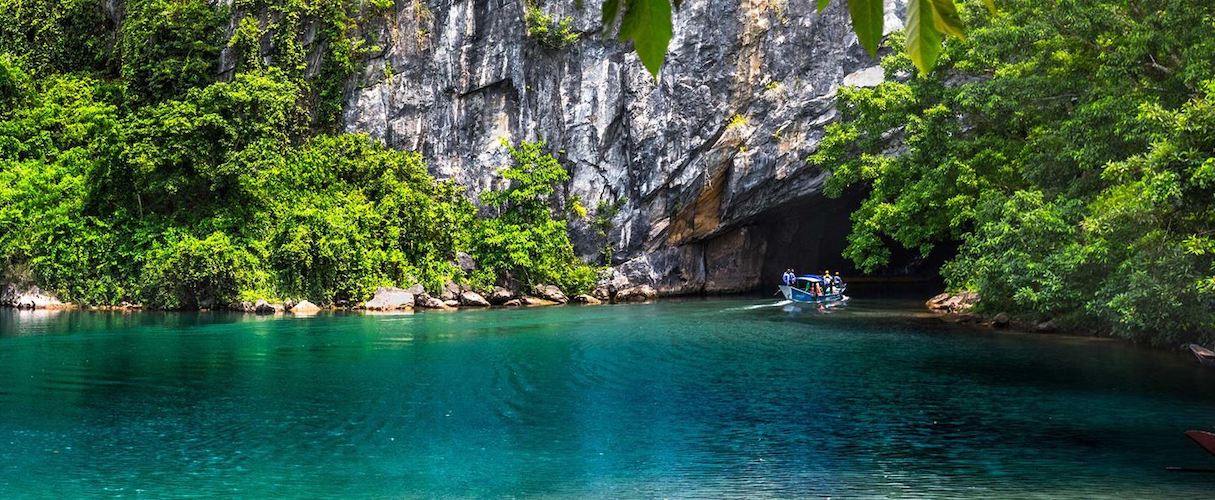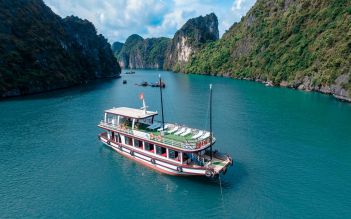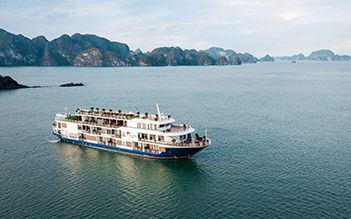Overview
Phong Nha - Ke Bang National Park is a national park in Bo Trach district and Minh Hoa district, Quang Binh province, about 50 kilometers northwest of Dong Hoi city and about 500 kilometers south of Hanoi. The park borders the Hin Namno Nature Reserve in Khammouan province, Laos to the west and it is 42 kilometers to the East Sea.
An overview of Phong Nha - Ke Bang National Park
The National Park is located in a limestone mountain area of about 200,000 hectares in the territory of Vietnam. The territory of Laos which is adjacent to this national park, also has a limestone area of about 200,000 hectares. The area of the core zone of the national park is 85,754 hectares and a buffer zone of 195,400 hectares.
The park was set up to protect one of the world's largest karst areas with about 300 caves and preserve the Northern Truong Son mountain ecosystem in the North Central of Vietnam. The characteristic of this national park is the limestone formations, 300 caves, underground rivers, and rare flora and fauna listed in Vietnam Red Book and the World Red Book. The caves here have a total length of more than 80 kilometers, but the British and Vietnamese cave explorers have explored only 20 kilometers, of which 17 kilometers belong to the Phong Nha area, and 3 kilometers is in the Ke Bang area.

Phong Nha Cave
Magnificent cave systems
Phong Nha Cave system
Phong Nha cave system has a total length of over 45km, originating from the south of Ke Bang limestone mountain area. The main door of this system is Khe Ry and Hang En caves located at an altitude of about 300m above the sea level, and the end is the Phong Nha cave with a total length of nearly 45 km. The caves in this system are distributed in the form of branches running in the direction of northeast-southwest
Vom Cave System
The system cave has a total length of over 30km, originating from Ruc Ca Roong cave, located at an altitude of 360m above the sea level and ending with Vom Cave. Vom cave system is located on the axis with the general direction of south - north. Ruc Ca Roong River, hidden in a rocky mountain, appears on narrow and deep valleys, eventually pouring into Chay River at the mouth of Vom Cave.
Ruc Mon Cave System
Ruc Mon cave system located in Minh Hoa district is also one of the big caves but not yet exploited much. Ruc Mon cave has a length of 2863m, a depth of 49m arc. In the cave, there is an underground river flowing through with many untouched and beautiful stalactites.

Son Doong Cave
River systems
Along with the magic cave system, Phong Nha Ke Bang National Park also has a complex system of rivers and streams and the longest underground rivers. There are three main rivers: Trooc River, Chay River and Son River with clear blue water flowing between the rocky mountains and forests, creating a poetic beauty.
Besides, Phong Nha - Ke Bang area also has dozens of beautiful streams and waterfalls such as Thac Gio, Mo Loan, Suoi Mo spraying up from the foot of a limestone mountain range.
This national park is also home to 1,000-meter high rugged peaks, of which the typical ones are the 1,128-meter high Co Rilata peaks and 1,213-meter high Co Preu peak.
The biodiversity
Phong Nha Ke Bang National Park is home to 113 large mammals, of which the most notable ones are tigers and gaurs, the world's largest bison, 302 bird species, of which 35 species are in the Vietnam Red Book, and 19 species included in the World Red Book; 81 species of amphibian reptiles (18 species in the Vietnam Red Book and 6 species of the World Red Book); 259 butterfly species; 72 species of fish, of which 4 are endemic to Vietnam. In 1996, there were newly discovered fish species in Vietnam.

Son River
There are ten primates, accounting for 50% of the total number of primates in Vietnam, seven species are in the Red Book of Vietnam, especially Ha Tinh langurs, stars and bears. Therefore it is the most diverse natural system in all national parks and biosphere reserves in the world.




